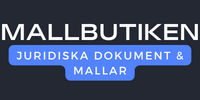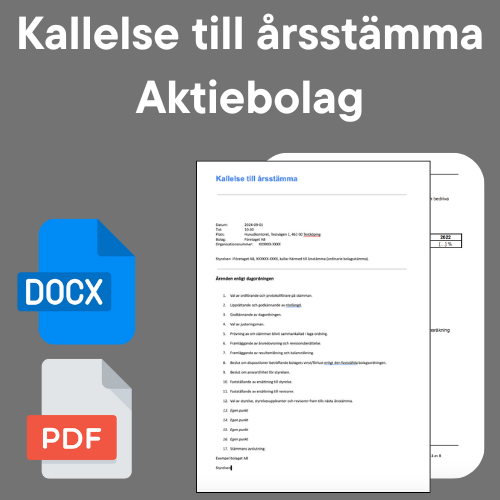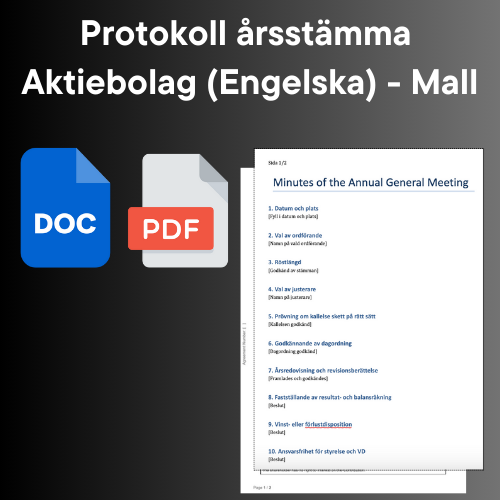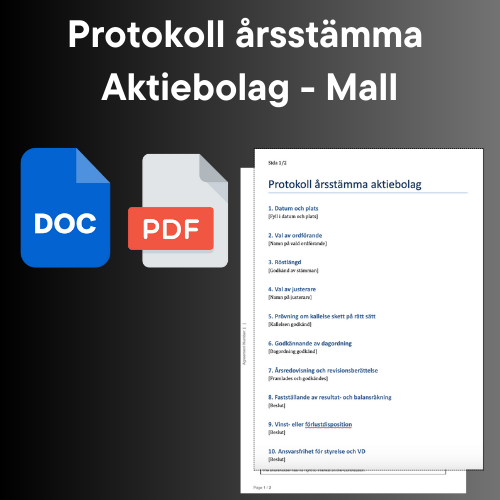Financial statements in joint-stock companies - Step by step
Share
Financial statements in joint-stock companies
Table of Contents
- Legislation and Regulations
- Preparations Before the Financial Statements
- Preparation of Annual Report
- Common questions
- Common Mistakes
- Important to remember
- Digital Submission
- Closing Words
Legislation and Regulations
Financial statements in a limited company are governed by several laws and regulations, mainly:
- The Annual Accounts Act (1995:1554): This act regulates how the annual report must be drawn up, its content and publication.
- The Accounting Act (1999:1078): Sets requirements for ongoing accounting, annual accounts and archiving of accounting material.
- The Accounting Board's K regulations: Companies are divided into different categories depending on size, which affects which accounting rules apply. K2 is for smaller companies, while K3 applies to larger companies.
A limited company must always draw up an annual report which is submitted to the Swedish Companies Registration Office no later than seven months after the end of the financial year. Smaller limited companies can apply the simplified K2 regulations, while larger companies must follow the K3 regulations.
Preparations Before the Financial Statements
Preparing for financial statements in good time is essential for a smooth process. Key steps include:
- Reconciliation of Accounts: Start by reconciling all accounts that have few transactions. Check that all invoices and receipts are accounted for and that the facility register is up to date.
- Inventory: If the company has stock, a thorough inventory should be carried out well in advance of the closing date.
- Accruals: Ensure that income and expenses are accrued correctly, so that they are charged to the correct fiscal year.
- Update of Accounts Payable and Accounts Payable: Ensure that all old invoices are paid or properly reserved as bad debts.
Preparation of Annual Report
The annual report in a limited company consists of several parts:
- Management report: A summary of the business's development, results and position as well as important events during the year.
- Income statement: Shows the company's income and expenses during the year and thus the year's profit.
- Balance sheet: Shows the company's assets, liabilities and equity at the end of the year.
- Notes: Provides explanatory information to the items in the income statement and balance sheet.
- Cash flow analysis: For larger companies according to the K3 regulations, shows inflows and outflows of liquid funds during the year.
Common questions
-
When must the annual report be submitted?
The annual report must be submitted to the Swedish Companies Registration Office no later than seven months after the end of the financial year.
-
Which companies must comply with the K3 regulations?
Larger companies, i.e. companies that meet more than one of the following conditions two years in a row: more than 50 employees, a balance sheet total of more than SEK 40 million, or a net turnover of more than SEK 80 million.
-
What is accrual?
Accruals means that income and expenses are booked in the accounting year they belong to, even if the invoice is sent or paid in another year.
Common Mistakes
- Incorrect or Incomplete Documents: A common mistake is not to have all the documents in order, which can lead to errors in the financial statements.
- Missed Accruals: Not accruing income and expenses correctly can lead to incorrect income reporting.
- Lack of Reconciliation: Not reconciling all balance accounts can lead to incorrect balances being reported.
Important to remember
- Continuous Bookkeeping: Keep the bookkeeping up to date continuously to avoid a large workload at closing.
- Use of Closing Software: Use a closing software to help automate and simplify the closing process.
- Check Tax Rules: Stay up to date on current tax rules that may affect the financial statements, such as rules for accrual funds and group contributions.
Digital Submission
It is strongly recommended to submit the annual report digitally. This reduces the risk of errors and speeds up the process. The company receives a receipt that the annual report has been received, and if it is complete, it is registered immediately.
Closing Words
Completing a financial statement is an extensive but necessary process for all limited companies. By following statutory rules and using the right tools can companies ensure that their financial reporting is accurate and meets all requirements. Digitization of the closing process can also contribute to increased efficiency and reduced administrative burdens.
For detailed instructions and support, it is recommended to use resources that offer guides and tools that can facilitate the closing work.




